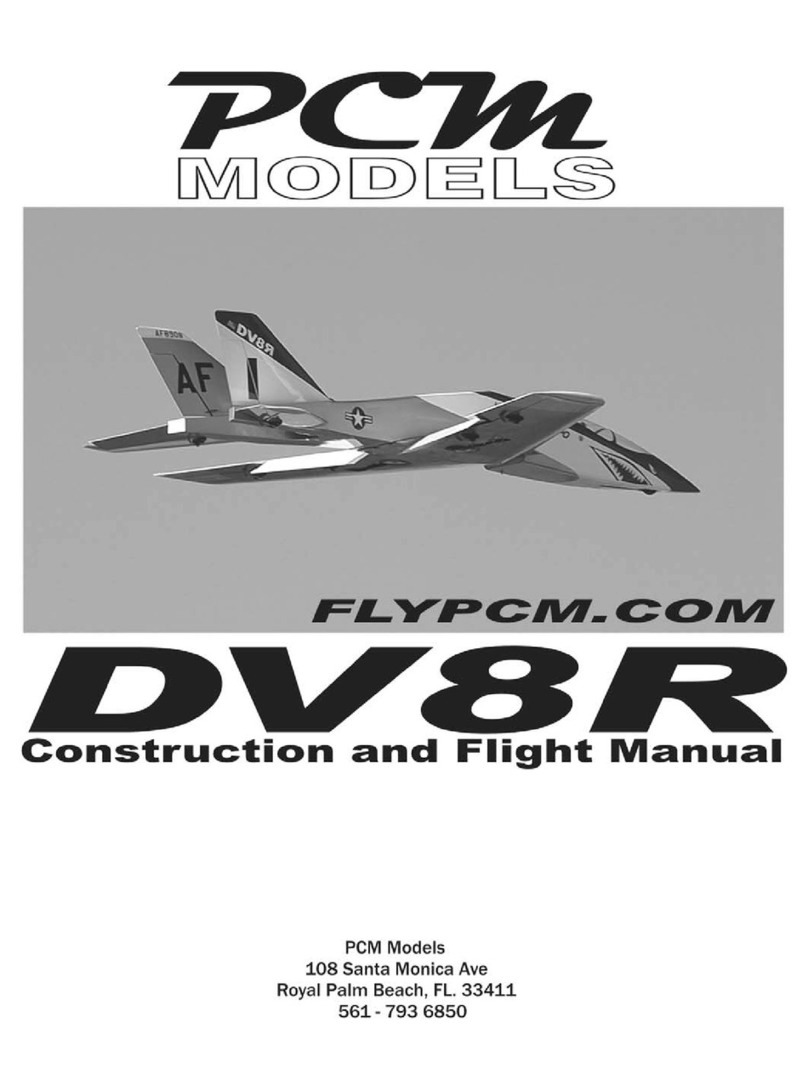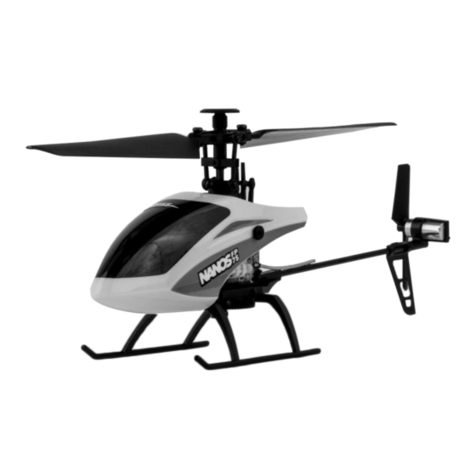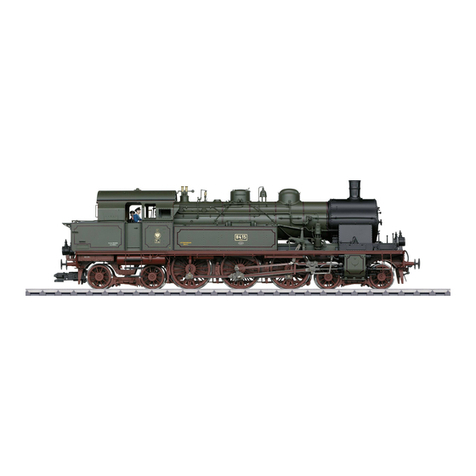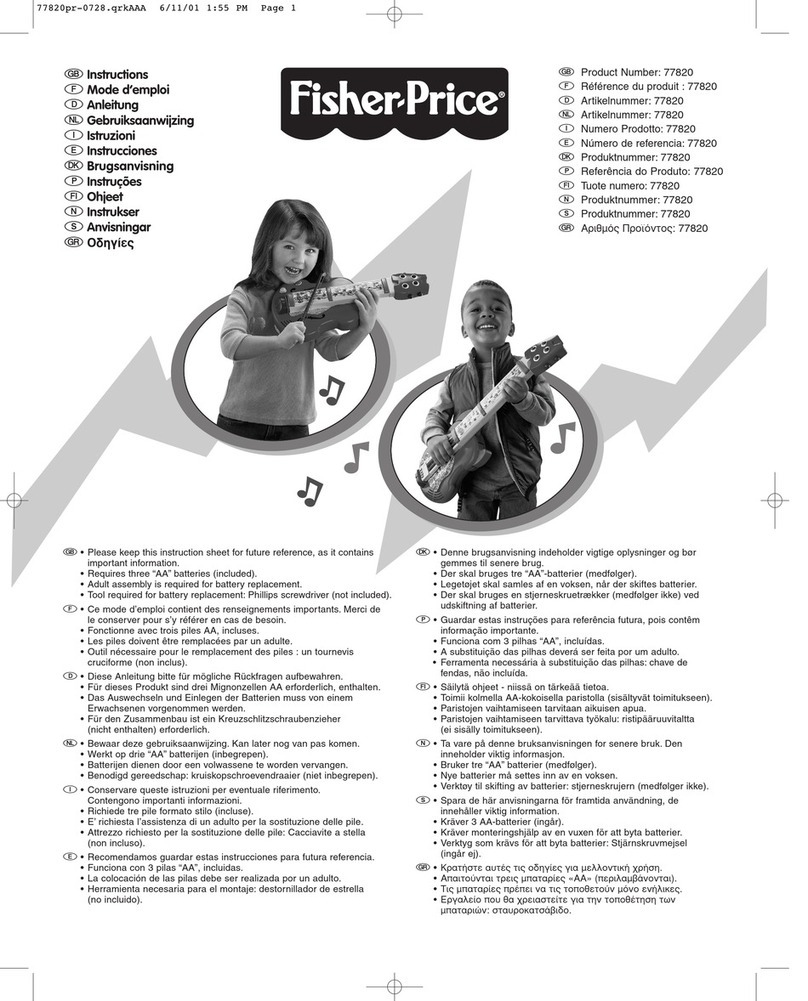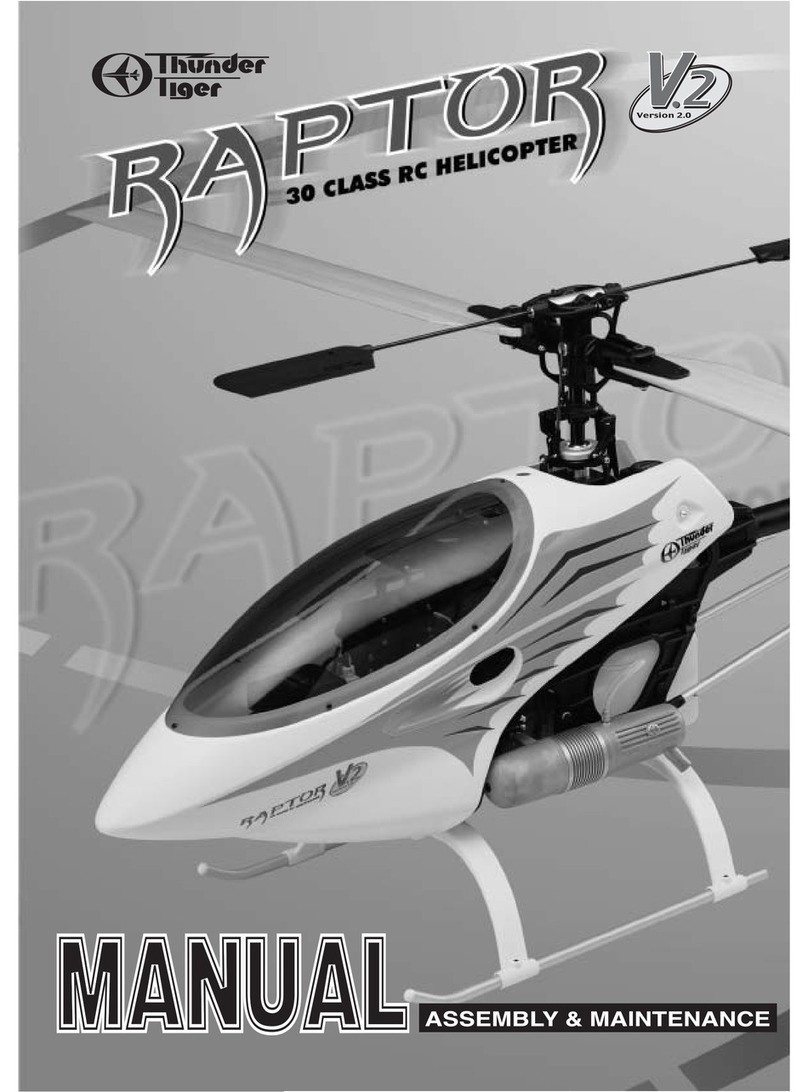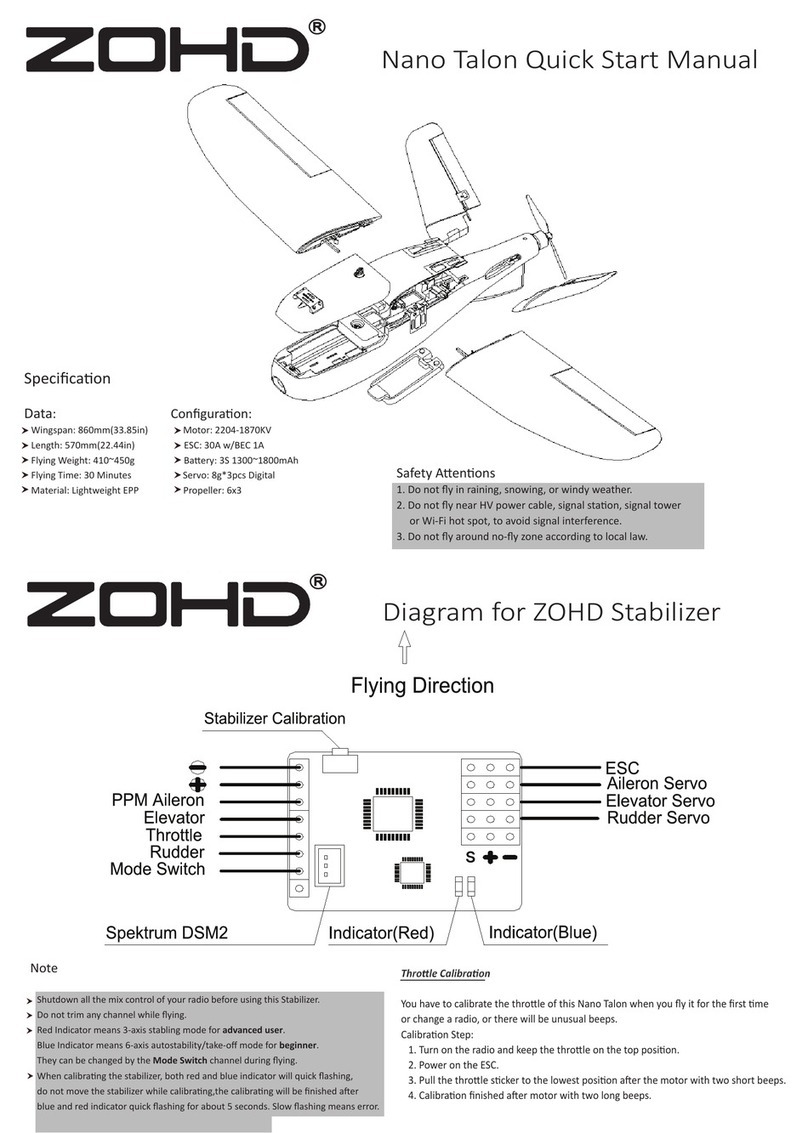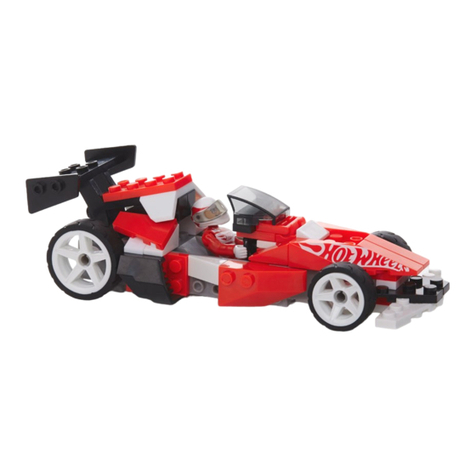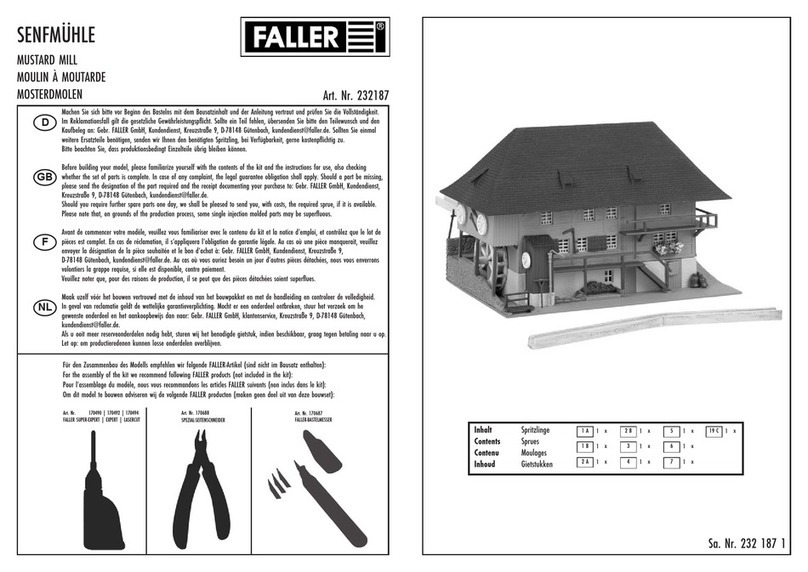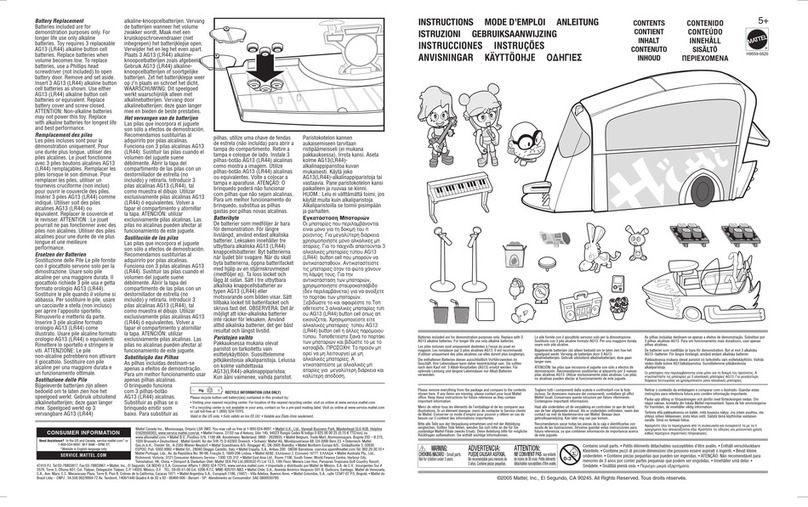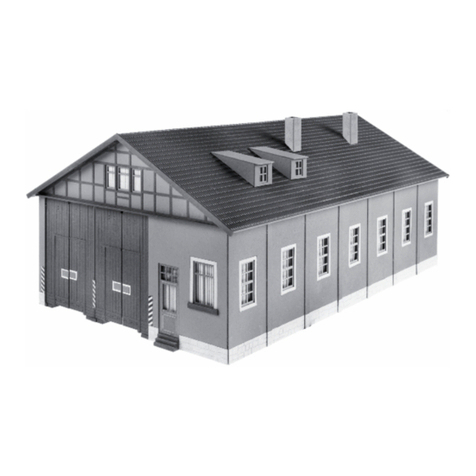PCM GLIDER MINI-RACE User manual

MINI-Race building instruction January 2014
www.pcm.at 1
Wingspan [mm]:
950
Aspect ratio:
7,7
Wing area [dm2]:
11,7
Wing loading [g/dm²] :
16
Takeoff weight [g]:
190
Airfoil:
AG03 mod
BUIDLING INSTRUCTION
GLIDER MINI-RACE

MINI-Race building instruction January 2014
www.pcm.at 2
CONTENTS
DATA
1. Kit –contents
2. What else do you need?
3. Electronic equipment
4. Settings for the first flight
ASSEMBLING THE MODEL
5. General information on DLG-models
6. Fuselage - structure
7. V-tail
8. Fuselage - installation of electronic components
9. Controlling of the ailerons
10. Installation of antenna
OTHER
11. Check list before starting
3
3
3
4
5
5
7
9
10
11
12

MINI-Race building instruction January 2014
www.pcm.at 3
DATA
1. Kit –contents
Fuselage (canopy, middle part, boom)
Wing
V-tail
Radioboard
Carbon lever for controlling elevator, 2 pieces
Carbon levers for controlling ailerons, 2 pieces
Carbon push rods for controlling ailerons, 2 pieces
Kevlar wire for controlling elevator
Steel wire for torsion springs, 2 pieces
Screws for fixing wing, 2 pieces
Carbon roving
Building instruction (please download from website)
2. What else do you need:
Epoxy-glue (for example UHU 300 endfest or Pattex Stabilit)
Super glue, thin
Maybe cotton flocks (to thicken epoxy-glue)
Electrical equipment (On/Off-switch, cables, plug, ...)
Electronic equipment
Steel wire, shrinking tube...
3. Electronic equipment
Servos
elevator/rudder/aileron
- Dymond D-47
Similar:
- Futaba FS31
- Modell Expert X31
Accumulators:
- GP NiMH accu 35AAAH, weight/cell 6g
(1,2 Volt 0,35 Ah 1/2AAA)
Receiver:
- MZK Sexta Mini
- Jeti Rex 540MPD

MINI-Race building instruction January 2014
www.pcm.at 4
4. Settings for the first flight
Centre of gravity: 62mm
(measure from the leading edge of the wing to the back)
Deflection of controls
Flaps negative (speed)
Flaps positive (thermal)
Landing position
Snap Flap

MINI-Race building instruction January 2014
www.pcm.at 5
ASSEMBLING THE MODEL
5. General information on DLG-models
DLG-models - such as MINI-Fireworks - are constructed strong enough to withstand the demands
of flying and landing and at the same time light enough to achieve the least possible flying weight.
Each part is dimensioned to its possible minimum and produced using lightest and fewest
material.
In order to continue this concept, please account the following when you assemble the model:
- Always use glue sparingly. Grind all gluing spots thoroughly, before you apply the glue.
- Electronic components should be placed as far as possible to the front, as you normally
need additional lead in the nose of the fuselage to achieve the necessary centre of gravity.
- If you don’t have any experience in working with resin or if you prefer an easier method, you
can combine the carbon rovings and glass fibre with super glue: Put some drops of super
glue on the rovings or the fibre, spread and press it with a (rustling) plastic bag. You will also
save one or the other gram with this method..
6. Fuselage - structure
Cut holes as shown
into the fuselage for
the pushrods of the
ailerons.
Push the boom into the middle part of the fuselage, until
the boom stands out 400mm. If the boom can’t be
pushed out far enough, you can sand off some material
inside the middle part of the fuselage.
Before you glue the boom, check that the servoboard can
be fixed to the boom inside the fuselage later according
to the picture. The flat side of the boom should be on the
upper side, the round one on the downside.

MINI-Race building instruction January 2014
www.pcm.at 6
Further, you must check, that the distance between the
end of the boom and both wingtips is the same.
If all alignments are correct, glue the boom with epoxy-
glue to the middle part of the fuselage.
In addition, the boom must be glued to the bottom of the
fuselage (see picture above).
Before you fix the servoboard inside the fuselage,
strengthen the board with a carbon roving.
You can glue the roving with super glue or epoxy glue.
We recommend to install all electronical components
provisionally before (see chapter 8) you glue the board
and try to mount the canopy. So you will be sure, that
everything fits inside.
In order to gain full strength, it is absolutely necessary to
fix the servoboard in the fuselage!
Strengthen the edges of the servo board with super
glue.
Glue the board with epoxy-glue to the boom (see picture
above) and to the sides of the fuselage.
If you have a hard landing, always check if the
servoboard is still fully glued before you make the next
start!

MINI-Race building instruction January 2014
www.pcm.at 7
7. V-tail
(The description is partly based on the model "Taser" as
the V-tails are almost identical.)
The V-tail is controlled by only one servo. The levers are
connected with a V-shaped wire.
First of all, glue the levers on the lower ends of the control
surfaces. The holes of the levers should be above the
hinge line.
Now, place the V-tail on the boom. Before you glue it,
Check the alignment of the V-tail regarding the axis of
the fuselage and the EWD, so that it is fixed correctly.
To do this, mount V-tail and wing on the fuselage. Fix the
V-tail with adhesive tape. Put another little piece of tape
in the middle of the sticky side of the adhesive tape. By
this, you will still be able to move the V-tail, as the
adhesive tape will not stick to the boom.
First method:
Look at the model from the front and slowly lower the tail,
until the ends of the elevator disappear behind the wing.
If both ends of the elevator disappear at the same time,
the V-tail is aligned symmetrically.
Second method:
Place the model upside down on a flat table. If both
wingtips and both tips of the elevator lie on the table,
the V-tail is aligned symmetrically.

MINI-Race building instruction January 2014
www.pcm.at 8
Make sure you have grinded the gluing spots on
fuselage and V-tail thoroughly, before you glue.
If the V-tail is aligned correctly, let super glue run into
the gluing spot from both sides.
Torsion springs
Bend the wires according to the drawing on the right. Tip
back the control surface of the rudder completely. (180°)
Stick the spring into the wood.
Then harden these spots with super glue.
Connection of the wire
First, the kevlar wires should be attached to the servos.
The servos should be brought into the zero position by
using a servo tester.
Then, you can hook in the kevlar wire into the lever.
Make a loop, twist the end and put the end of the wire into
a shrinking tube. Shrink it and fix it with a drop of super
glue.
Drill a small hole in the boom to lead the wire inside the
fuselage to the servo.
To keep the carbon from chafing at the wire, use a plastic
tube to lead the wire through the hole.
Note, that the wire keeps free movable without problems.

MINI-Race building instruction January 2014
www.pcm.at 9
8. Fuselage –installation of electronic components
Suggestion for
arrangement:
View from above:
Mini-S
(elevator/rudder):
green accus,
right side
Mini-Q
(elevator/aileron):
red accus,
left side
View from the
bottom
Mini-S
(elevator/rudder):
green accus,
top
Mini-Q
(elevator/aileron):
red accus, bottom
(servo for elevator is
on downside of
radio board)

MINI-Race building instruction January 2014
www.pcm.at 10
9. Controlling of the ailerons
To avoid
unintentional
demounting glue
little steel hooks to
the ends of the
carbon pushrods
Connection to the
servos in the
fuselage
Connection to the
levers on the wing

MINI-Race building instruction January 2014
www.pcm.at 11
10. Installation of antenna
In order to have an undisturbed reception a part of the
antenna must be situated outside the model.
An easy solution is to fix the antenna to the end of the
elevator. Lead the antenna inside the fuse behind the wing
and then leave the fuselage.
Another possibility is to lay the antenna inside the gap of
the aileron. For improving reception you can solder the
antenna to a steel wire, d=0,3mm, which you fix at the end
of the wing and let stand out to the back about 10-15cm.
Always TEST THE RECEPTION on ground before you
fly!

MINI-Race building instruction January 2014
www.pcm.at 12
OTHER
11. Check list before starting:
1. Check centre of gravity
2. Check control surfaces:
Do control surfaces move in the correct direction?
Check the greatest swings
3. Check reception:
Leave the antenna inside the radio control and go
away from the glider up to a distance of about
60m. The control surfaces should not tremble.
Table of contents
Other PCM Toy manuals

PCM
PCM ELVIRA User manual

PCM
PCM Erwin XL Ultralight Electro User manual
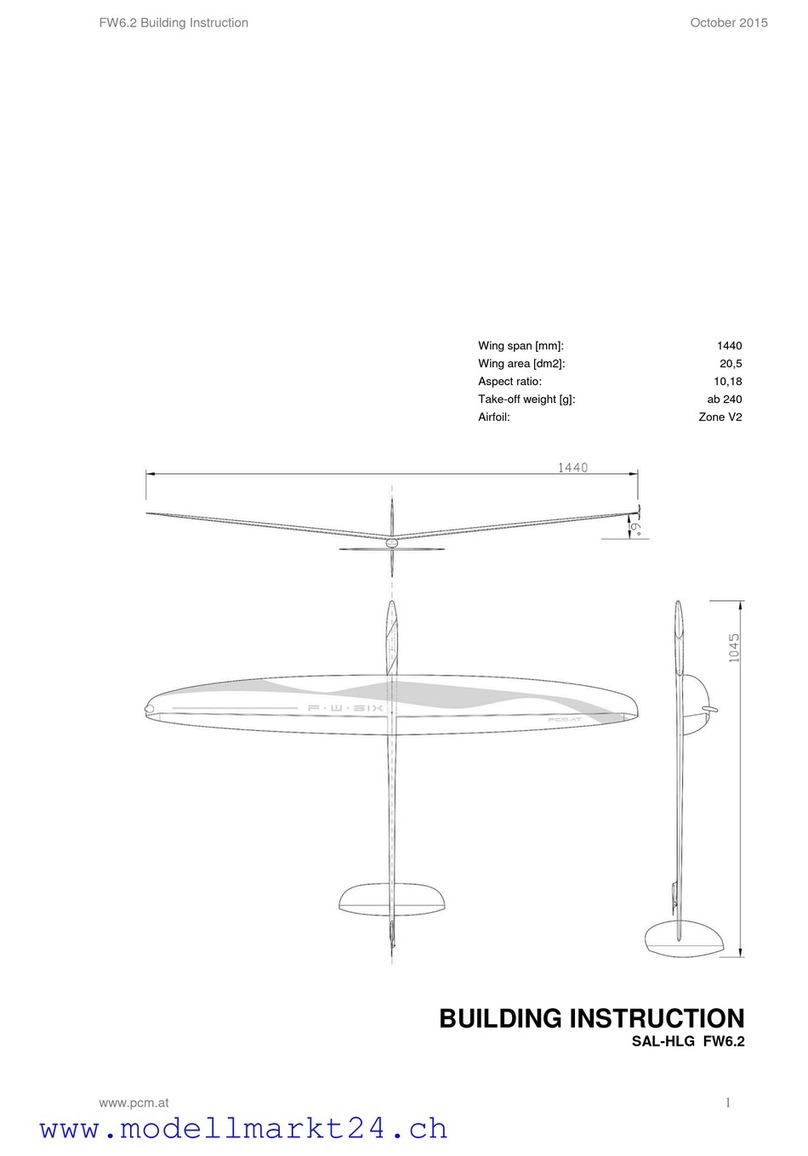
PCM
PCM FW6.2 User manual

PCM
PCM ERWIN XL slope User manual
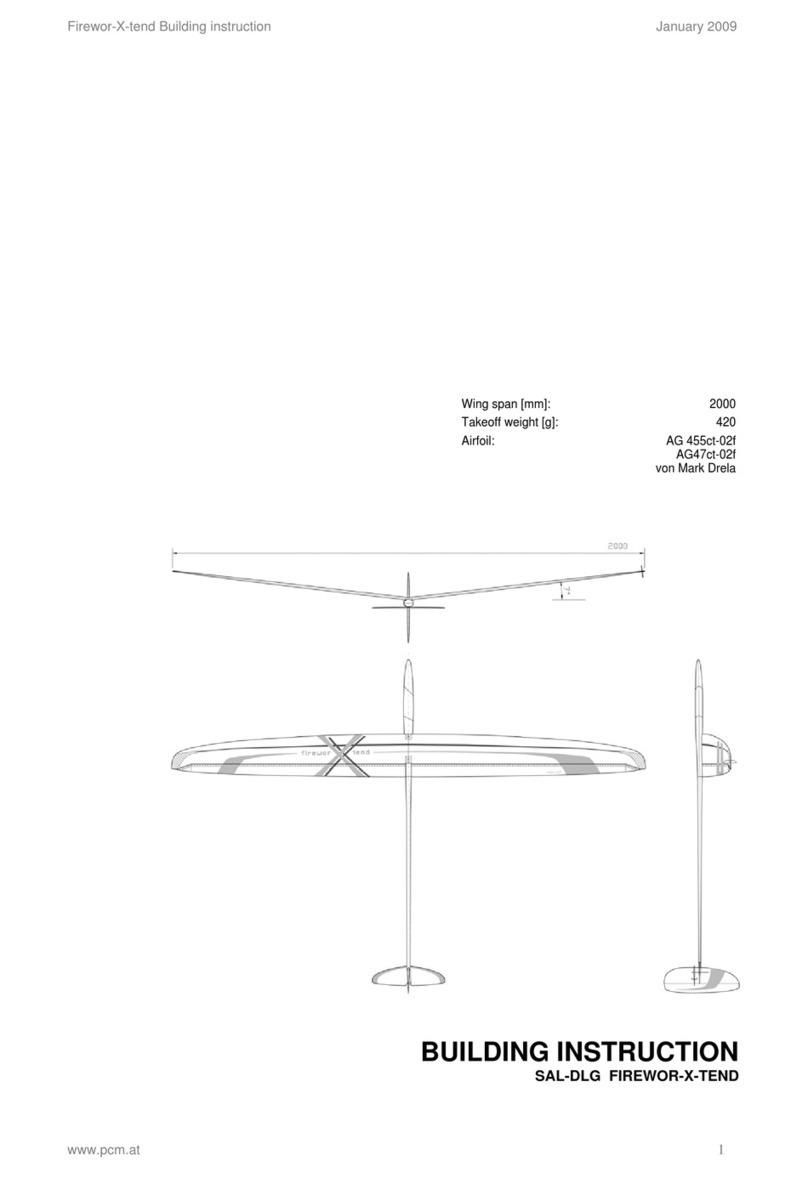
PCM
PCM SAL-DLG FIREWOR-X-TEND Instruction Manual
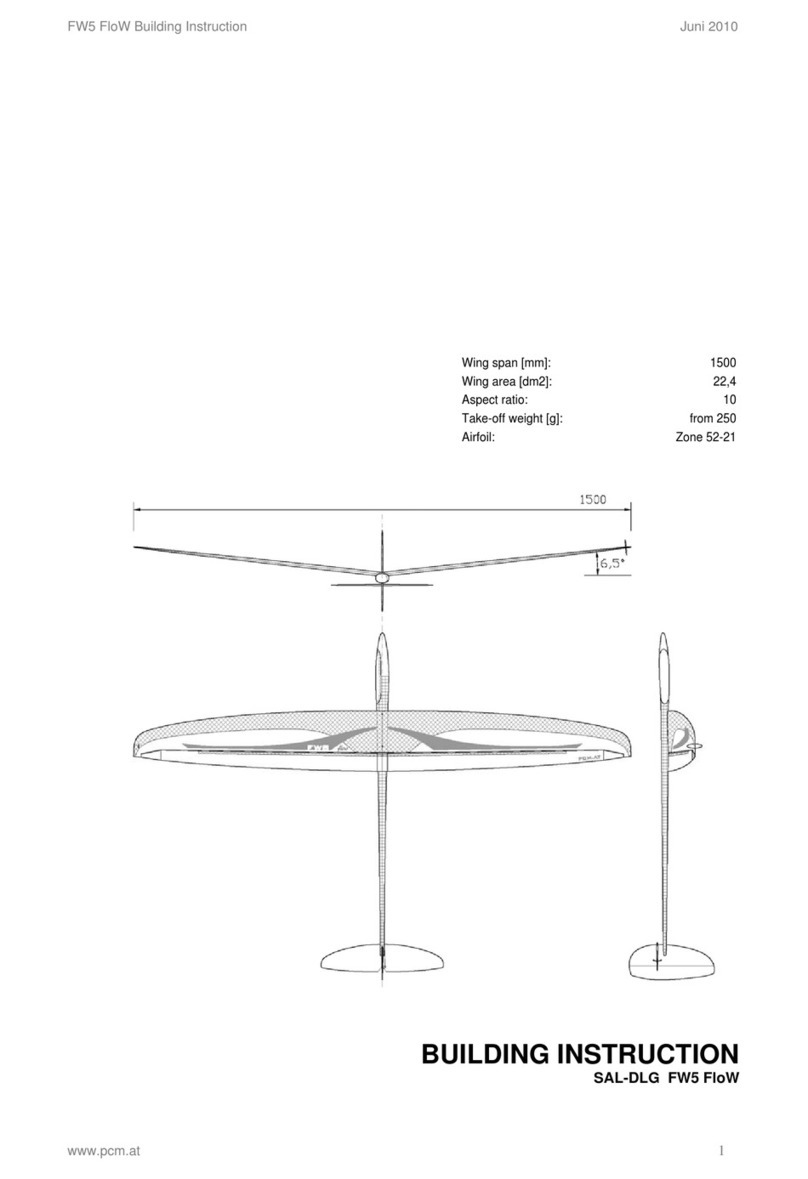
PCM
PCM FW5 FloW Instruction Manual
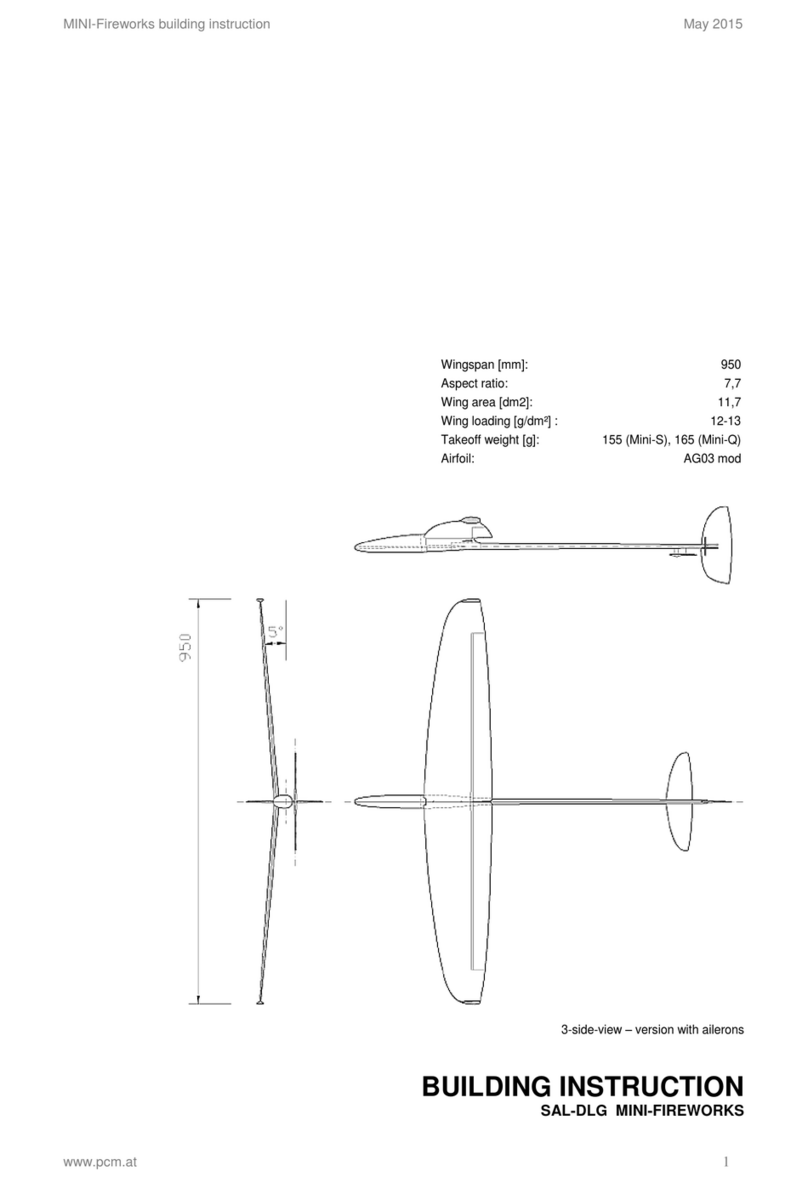
PCM
PCM MINI-S Instruction Manual
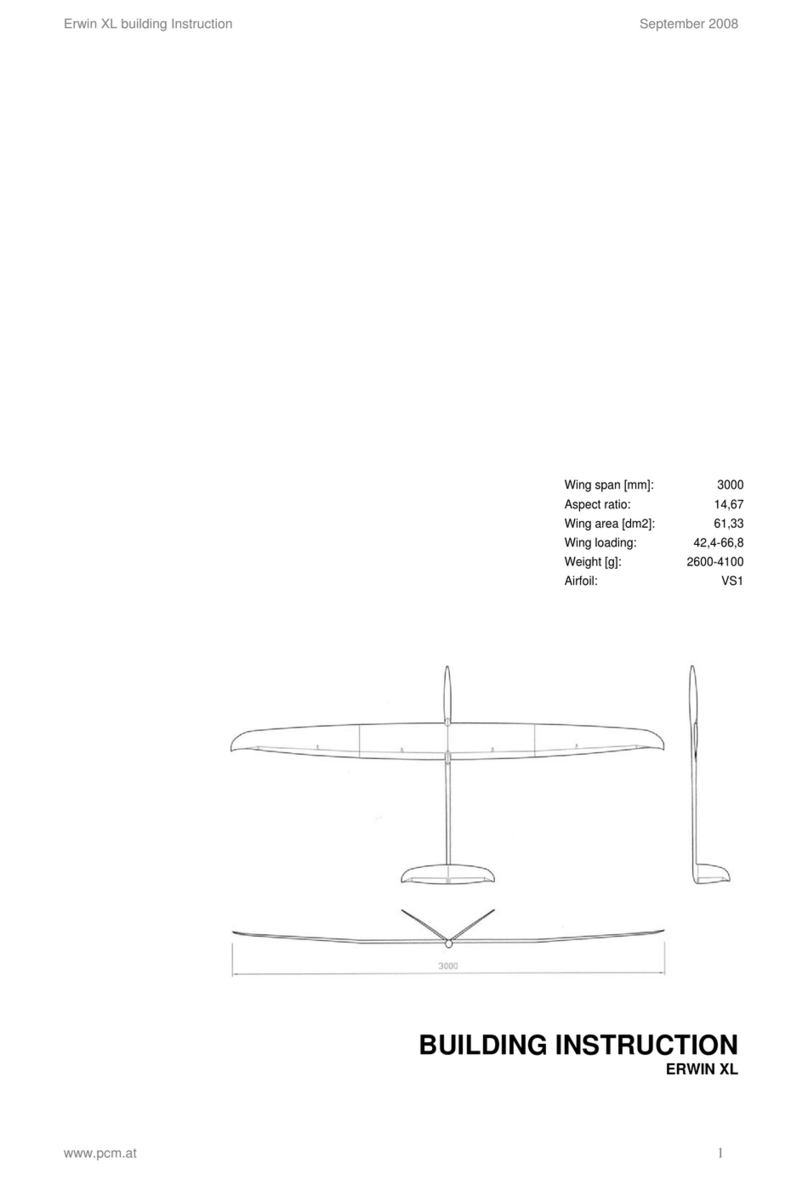
PCM
PCM Erwin XL User manual
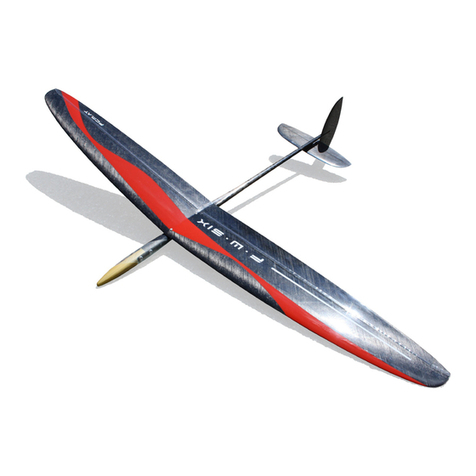
PCM
PCM FW6 Instruction Manual
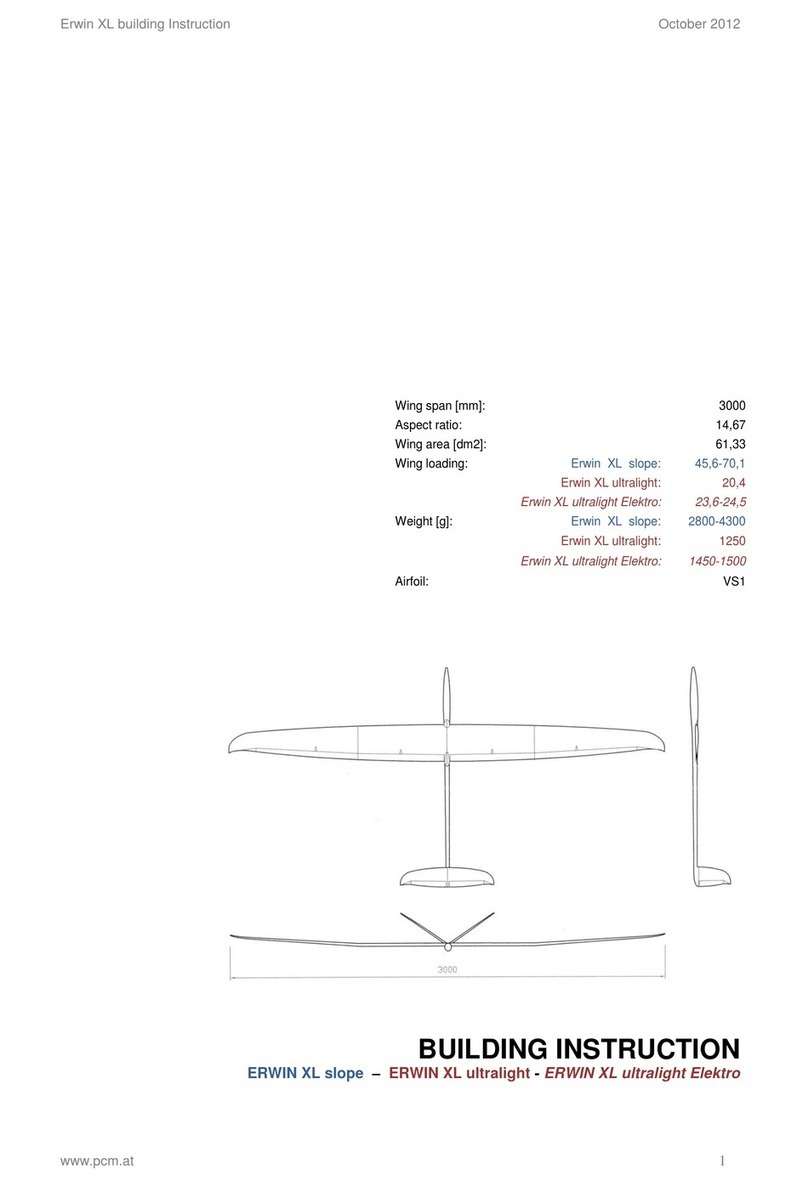
PCM
PCM ERWIN XL slope User manual
